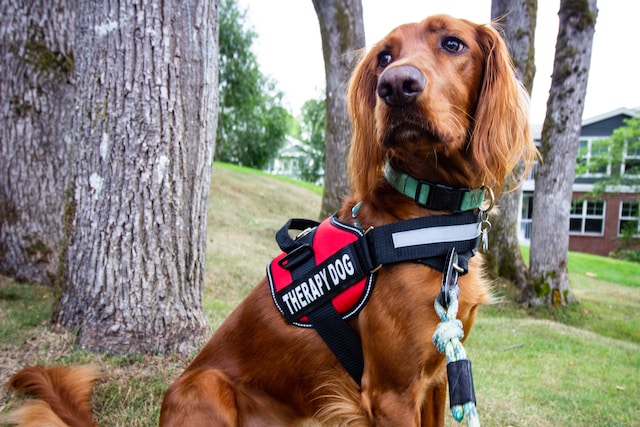
In the realm of healthcare, a new ally has emerged to provide comfort and solace to patients facing physical and emotional challenges – therapy dogs. You may have learned that these four-legged companions are more than just adorable faces. The truth is, they possess an extraordinary ability to alleviate stress, anxiety, and even pain.
Let’s explore how therapy dogs work their magic and help patients in various healthcare settings.
The Power of Unconditional Love
One of the primary reasons therapy dogs are effective in keeping patients calm is the unconditional love and non-judgmental companionship they provide. Patients who find themselves in vulnerable and stressful situations in healthcare settings, whether it be a hospital, nursing home, or rehabilitation center, can experience a sense of security and comfort with therapy dogs around.
Distraction from Pain and Anxiety
Therapy dogs are expert skilled at diverting your attention from pain and anxiety. For patients undergoing medical treatments, especially those involving pain or discomfort, the presence of a furry friend can serve as a distraction.
Patients can engage with a therapy dog through play, petting, or simply observing their playful antics. Doing so can shift their focus away from their immediate concerns, which provides a mental break and reducing the perception of pain.
In pediatric settings, therapy dogs are able to help children cope with medical procedures. From needle pricks to lengthy hospital stays, these dogs serve as cheerful companions who offer a source of joy during stressful moments.
Read more: Does Your Dog Have Therapy Dog Potential?
Stress Reduction and Lowered Blood Pressure
Therapy dogs contribute significantly to stress reduction, with numerous studies demonstrating their ability to lower cortisol levels – a hormone associated with stress.
In addition to hormonal changes, the calming effect of therapy dogs extends to physiological responses such as reduced heart rate and blood pressure. The rhythmic and soothing presence of a dog has been linked to improved cardiovascular health, creating a positive impact on the overall well-being of patients.
Facilitating Social Interaction
In healthcare environments, patients may experience feelings of isolation and loneliness. Therapy dogs serve as social catalysts by promoting interaction between patients, caregivers, and even healthcare staff.
This, in turn, can break down communication barriers and create a sense of community. This social benefit is particularly valuable for patients who may be going through long-term treatments or extended hospital stays.
Final Thoughts
Patients who are facing different challenges can benefit from the love, distraction, and stress relief that furry companions offer. As we continue to appreciate the positive impact of therapy dogs, it’s clear that their presence goes beyond the realms of cuteness – it’s a therapeutic force that has healing potential!
Do you own an assistance animal? Register your pet today.
The Service Animal Registry of California invites you to have your assistance animal registered in order to designate its status. We also encourage you to take our online classes so you can be fully aware of your rights and gain more knowledge about your support animal.
Finally, we present to you our book entitled, “ASSISTANCE ANIMAL LAWS: LEARN YOUR RIGHTS REGARDING SERVICE ANIMALS, EMOTIONAL SUPPORT ANIMALS, THERAPY PETS, AND OTHER DOGS, CATS, AND ASSISTANCE ANIMALS” to provide you with a complete education on assistance animals.
Purchase your copy of the book by clicking the image below.

